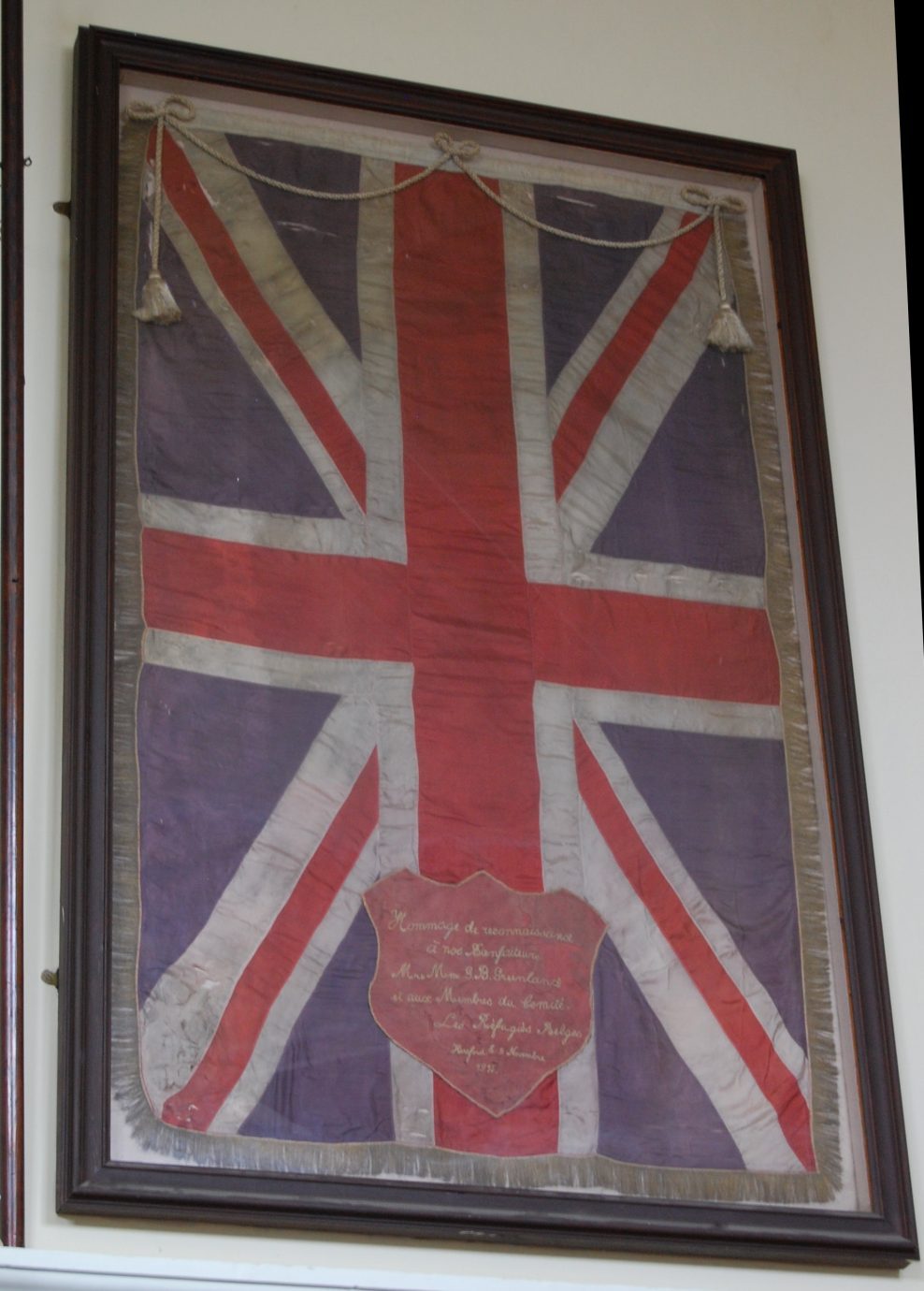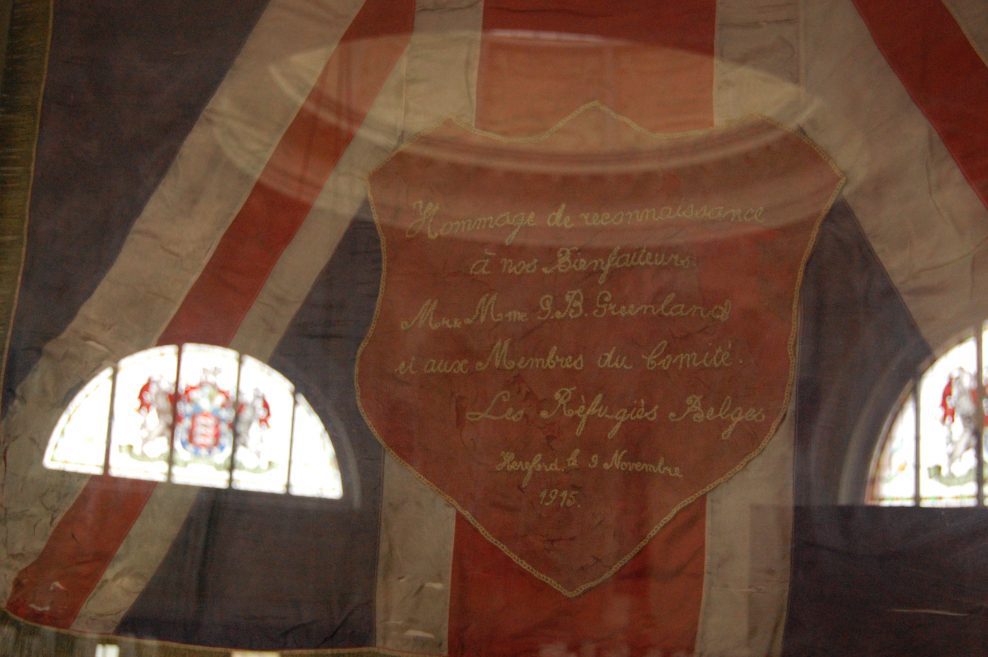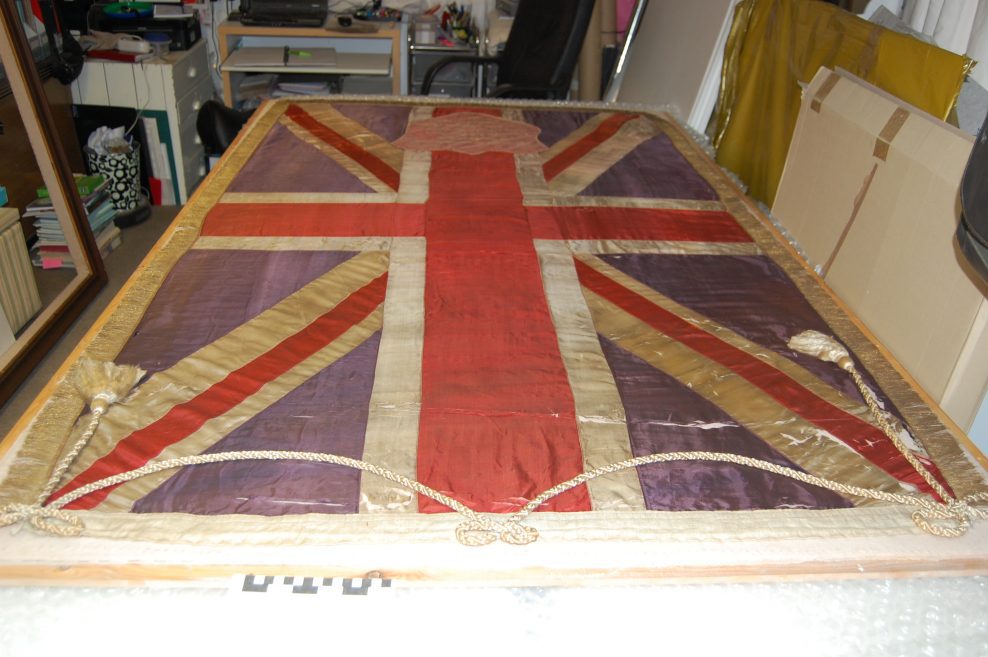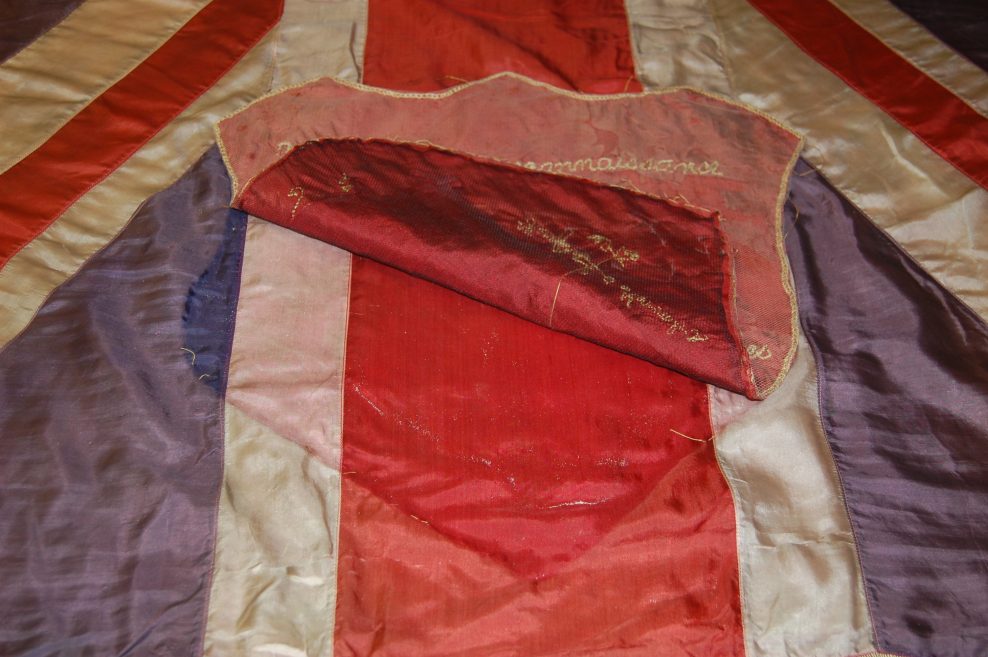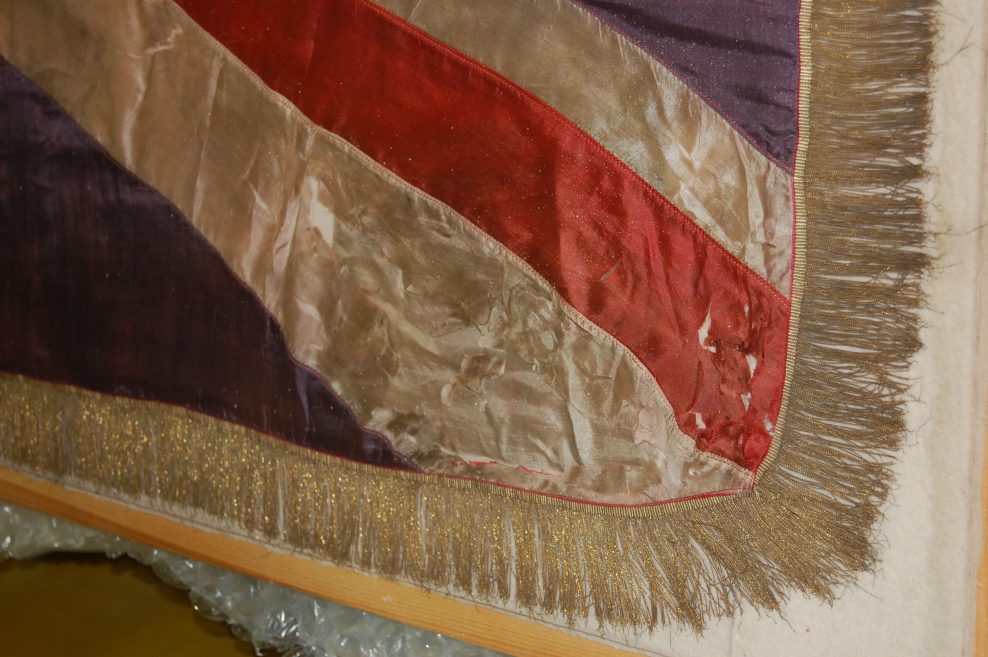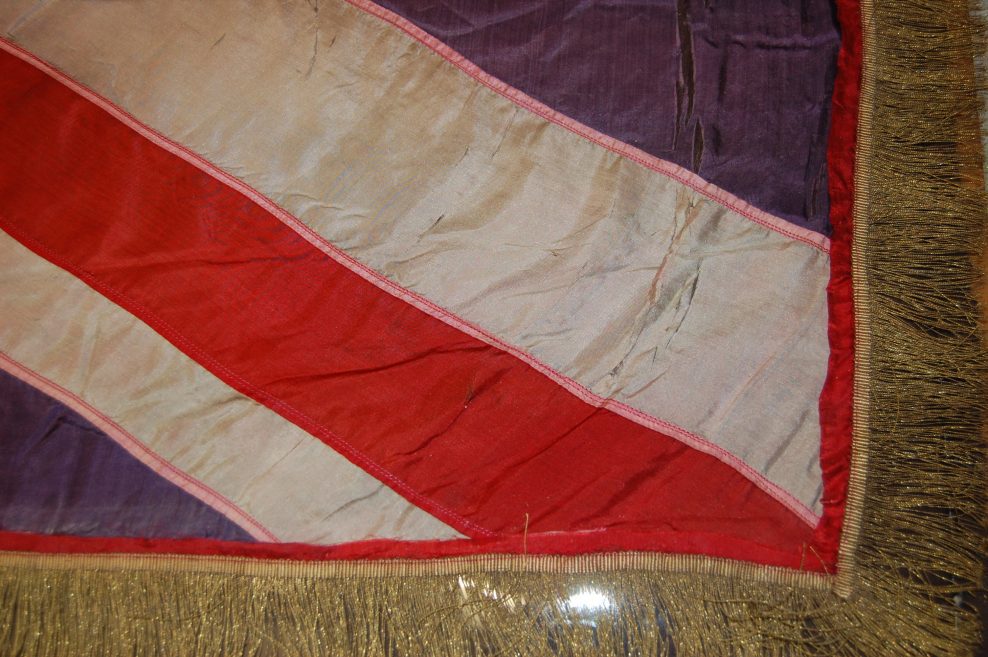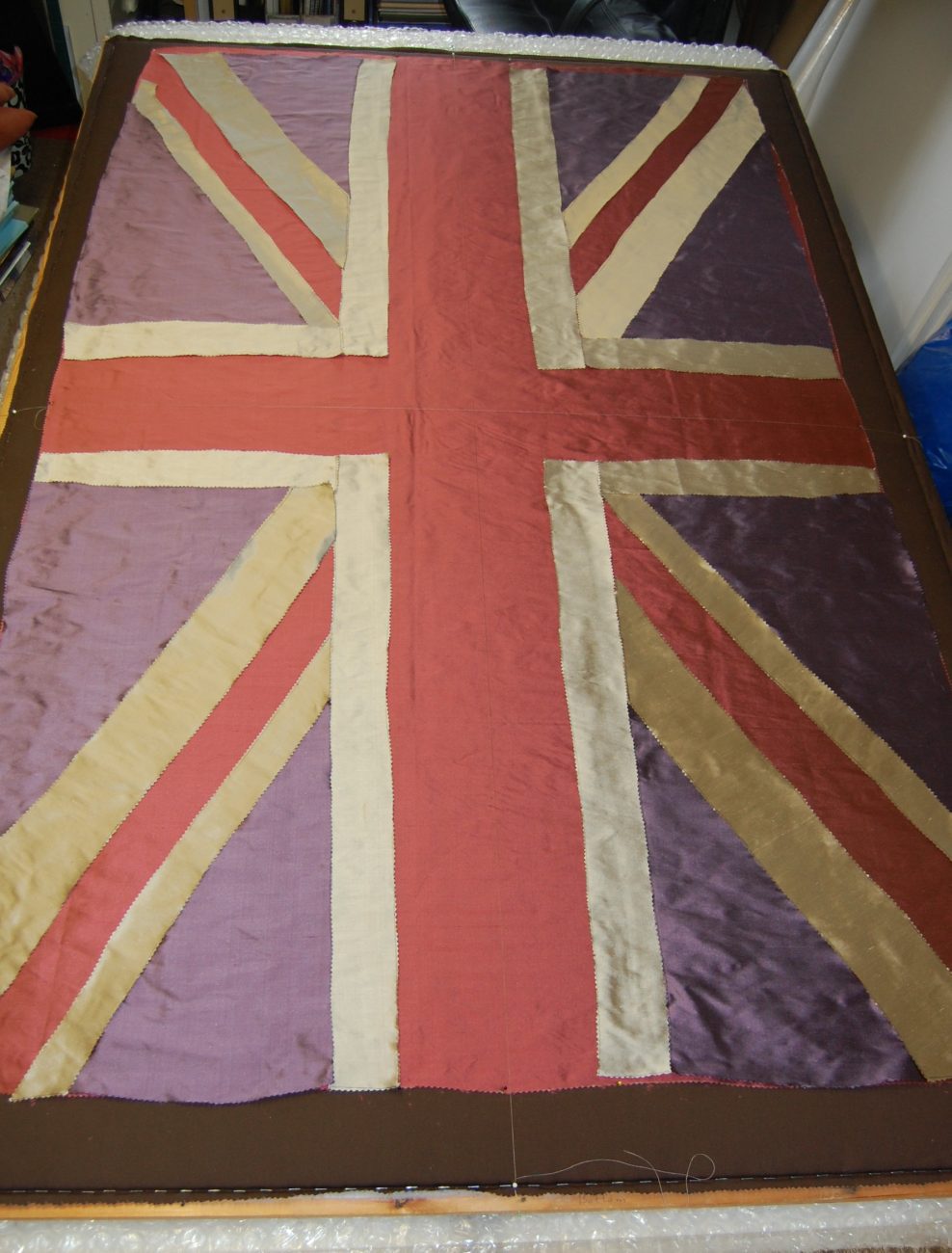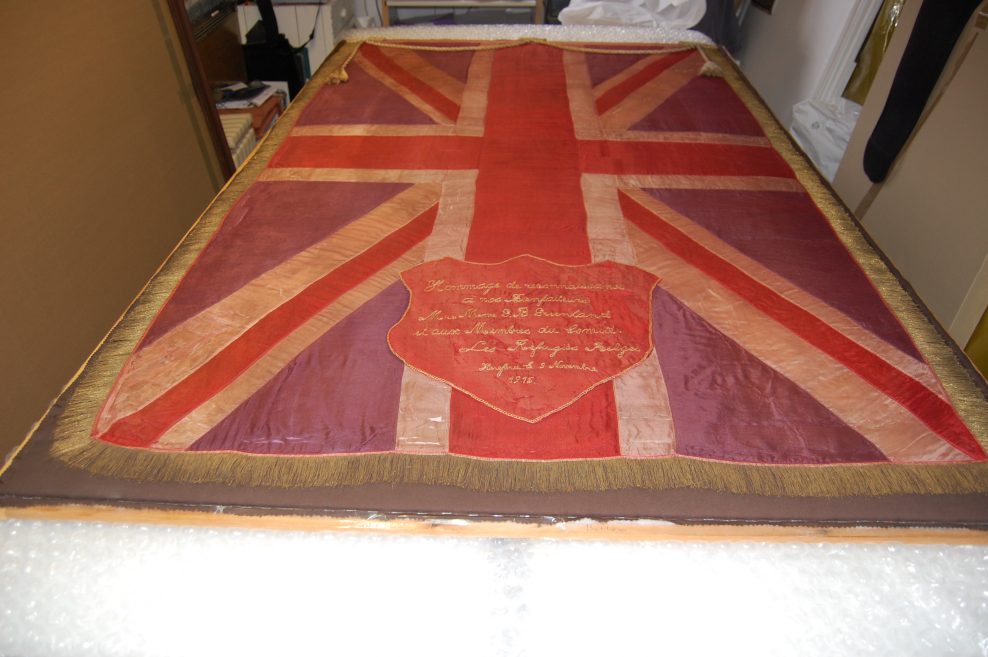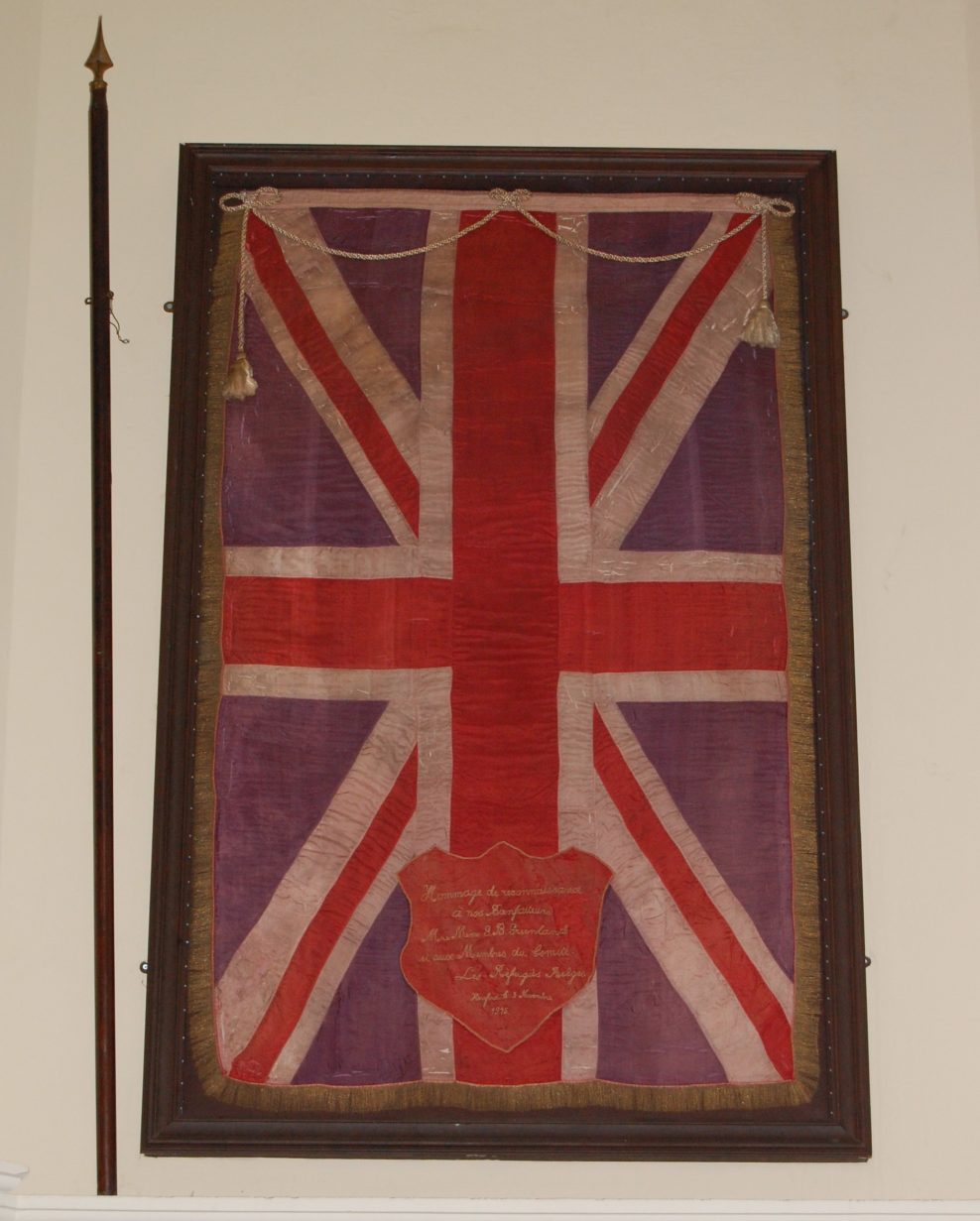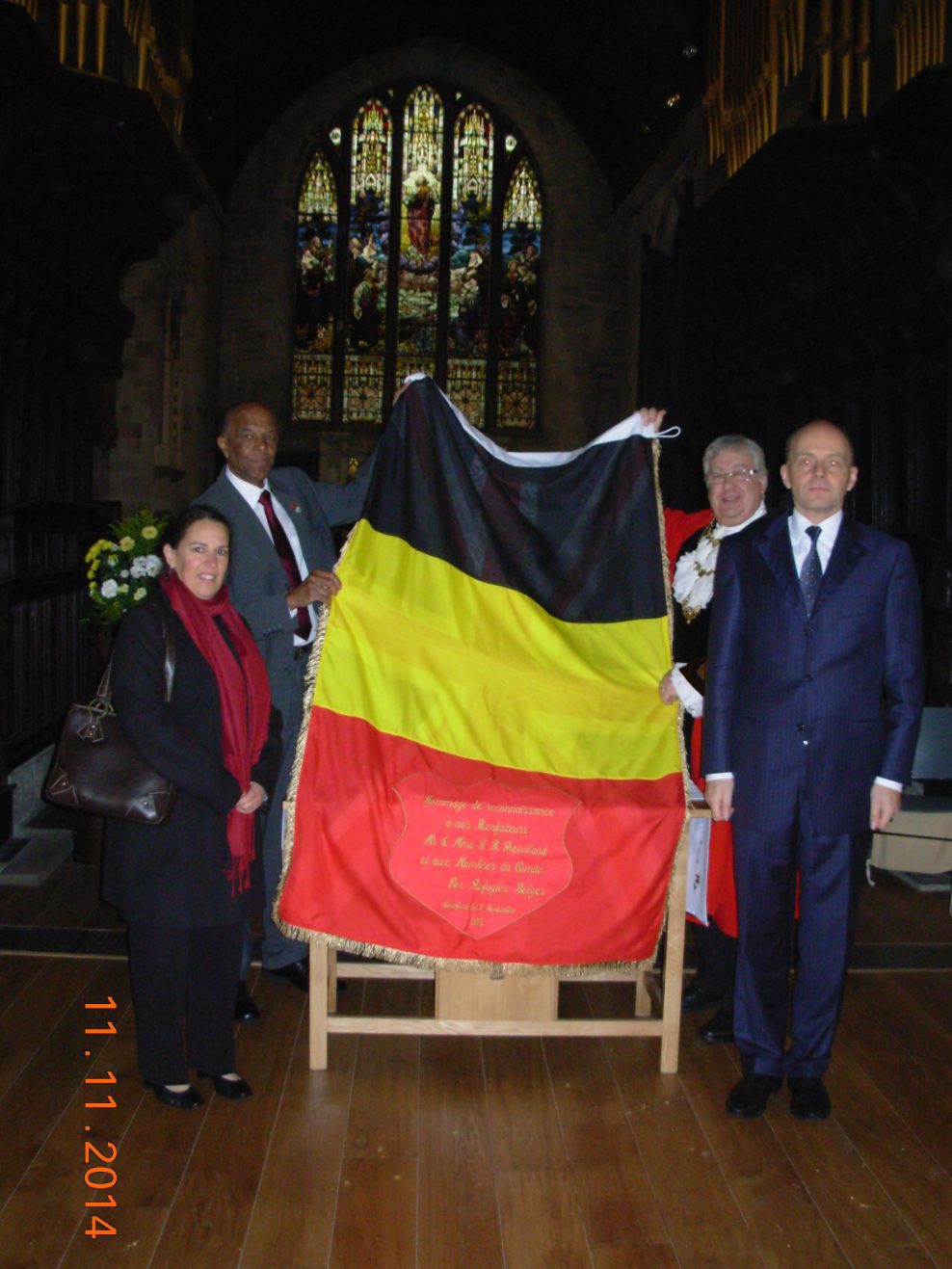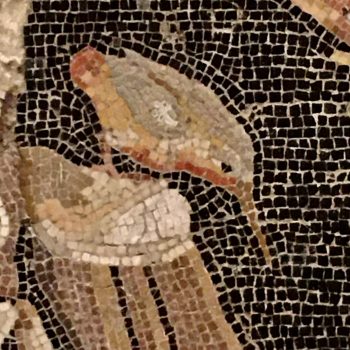Projects
Flag made by Belgian refugees welcomed by Hereford in 1914
A double-faced flag, showing the Union flag backed by the Belgian flag, was presented to the Mayor of Hereford in 1915 in recognition of the City’s welcoming of Belgian refugees to Hereford on the outbreak of World War I in 1914. The flag, made from dress-weight silk fabrics by the Belgian refugees, was displayed in the council chamber of Hereford Town Hall, initially on open display, latterly in a glazed frame. As the flag’s centenary approached, concerns for its long-term preservation were raised…
The flag was displayed in the Council Chamber of Hereford Town Hall, framed and glazed and attached high on the wall. It had been given to the mayor and people of Hereford on 9th November 1915 by a group of Belgian refugees who had left their homes in 1914 and had been taken in and given board and lodging by Herefordians. The flag was made by one of the Belgian ladies. It comprised a Union flag, backed with a Belgian flag, on the lower portion of which was a shield bearing an embroidered inscription. The fabrics are of a much lighter weight silk than would usually be used for a flag. No doubt the maker of the flag used what was to hand at the time.
The flag measures approximately 76” (193 cm) tall by 42” (107 cm) wide. It is pieced from lightweight plain weave silk fabrics of blue, red and cream, machine-stitched together. The pole sleeve is made from undyed linen; the other three sides are trimmed with a silk and gold-coloured fine thread fringe. Towards the fly edge of the flag there is a shield shaped panel of red silk fabric, covered with coarse mesh red net, and decorated around its edge with chain stitch embroidery. The shield bears the embroidered inscription:
“Hommage de reconnaissance
a nos Bienfaiteurs
Mr & Mme G. B. Greenland
et aux Membres du Comite
Les Refugies Belges
Hereford le 5 Novembre
1915”
The flag was housed in a dark brown wood glazed frame with a deep rebate. The backboard and the inner sides of the frame were covered with undyed wool felt. It was unclear when the flag had been mounted in its frame, but it was likely that the materials used in the frame were not of archival quality and were contributing to the degradation of the flag. In particular, the wool backing felt would have been hastening damage to the silk fabrics: wool fibres contain sulphur, which is a known catalyst for the degradation of silk fibres.
Photographs displayed in the Council Chamber showed that the embroidered shield originally featured on the other face of the flag, a Belgian flag pieced from black, yellow and red silk fabrics.
The flag was in a fragile state. There were many splits in the silk fabrics; these were particularly noticeable at the upper part of the flag, next to the pole sleeve. While the flag was displayed away from windows and direct sunlight, stained glass lights in the cupola above the Council Chamber reflected in the frame’s glass and made it difficult to see detail clearly.
The brief was to conserve the flag for continued display in the Council Chamber. Consideration was to be given to enhancing the display to explain the presence of the flag in the Council Chamber and to restore the Belgian connection to prominence.
Dismantling
On arrival at the workshop the flag was unwrapped and photographed. The glazed frame was unscrewed from the backboard to which the flag was attached; the glass was discarded. Wool felt stapled and glued to the interior of the frame was removed. The interior and the outer upper edge of the frame were covered with Moistop, a polyethylene/aluminium vapour barrier to insulate the flag from any damaging chemicals present in the wood frame. The Moistop was covered with Creation Baumann British Museum-tested cotton fabric, colour matched to the outer colour of the frame.
Staples holding the wool fabric to the backboard were removed. The flag was carefully rolled up on its wool backing and lifted clear.
The backboard was covered with Moistop, a layer of polyester wadding and a layer of Creation Baumann BM-tested brown fabric, held in place with stainless steel staples.
Supporting
The flag was laid out face up on the backboard. It was clear that all that remained of the Belgian flag was the embroidered shield. The smaller component pieces of the Union flag had clearly fared better over the years than the three large panels of the Belgian flag, which were visible only on the reverse at the edges of the flag, next to the fringe.
A tracing of the component pieces of the flag was made and used to cut out panels of new, dyed-to-match silk fabric, which were laid out over the backboard.
The flag was laid out over the new silk panels and dyed fine gauge net was laid over the flag; the net was sewn in place along the seam lines, the edges and through splits in the silk with running stitches worked in fine dyed polyester thread. The rope was re-sewn in place at the upper edge of the flag.
The frame was re-glazed with UltraVue laminated anti-static, anti reflecting, UV-filtering glass. The frame was lowered over the flag on its backboard and secured along the edges with heavy duty screws.
The conserved flag was reinstalled in the Council Chamber
The flag is now well supported on its backboard within its frame. All materials used in the conservation process are of archival quality and will not give off chemicals that could contribute to the speedy deterioration of the flag. The laminated glass used in the frame will protect the flag from 98% of UV light, slowing down the rate of fading of the fabrics. The anti reflective layer in the glass will help to minimise distracting reflections and allow the flag to be seen clearly.
A display board in the Council Chamber explains the significance of the flag to the history of Hereford. A replica of the original flag, made by Flying Colours Flagmakers of Knaresborough, was donated by Stuart Dove, the prime mover of the flag project. It is displayed next to the original as an aid to the understanding of the flag’s history.
The conservation of the flag was jointly funded by Hereford City Council and the Belgian Embassy.
